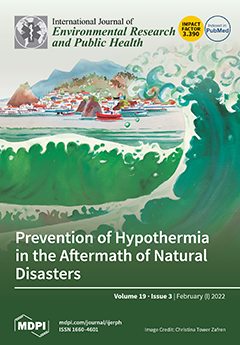Legionnaires’ disease (LD) (
Legionella) is a common cause of community-acquired pneumonia (CAP) in those requiring hospitalization. Geographical variation in the importance of
Legionella species as an aetiologic agent of CAP is poorly understood. We performed a systematic review and meta-analysis of
[...] Read more.
Legionnaires’ disease (LD) (
Legionella) is a common cause of community-acquired pneumonia (CAP) in those requiring hospitalization. Geographical variation in the importance of
Legionella species as an aetiologic agent of CAP is poorly understood. We performed a systematic review and meta-analysis of population-based observational studies that reported the proportion of
Legionella infection in patients with CAP (1 January 1990 to 31 May 2020). Using five electronic databases, articles were identified, appraised and reported in accordance with the Preferred Reporting Items for Systematic Reviews and Meta-Analysis (PRISMA) guidelines. The quality of the included studies was assessed using the Newcastle–Ottawa Scale. Univariate and multivariate meta-regression analyses were conducted using study design, WHO region, study quality and healthcare setting as the explanatory variables. We reviewed 2778 studies, of which 219 were included in the meta-analysis. The mean incidence of CAP was 46.7/100,000 population (95% CI: 46.6–46.8). The mean proportion of
Legionella as the causative agent for CAP was 4.6% (95% CI: 4.4 to 4.7). Consequently, the mean
Legionella incidence rate was 2.8/100,000 population (95% CI: 2.7–2.9). There was significant heterogeneity across all studies
I2 = 99.27% (
p < 0.0001). After outliers were removed, there was a decrease in the heterogeneity (
I2 = 43.53%).
Legionella contribution to CAP has a global distribution. Although the rates appear highest in high income countries in temperate regions, there are insufficient studies from low- and middle-income countries to draw conclusions about the rates in these regions. Nevertheless, this study provides an estimate of the mean incidence of
Legionella infection in CAP, which could be used to estimate the regional and global burden of LD to support efforts to reduce the impact of this infection as well as to fill important knowledge gaps.
Full article





